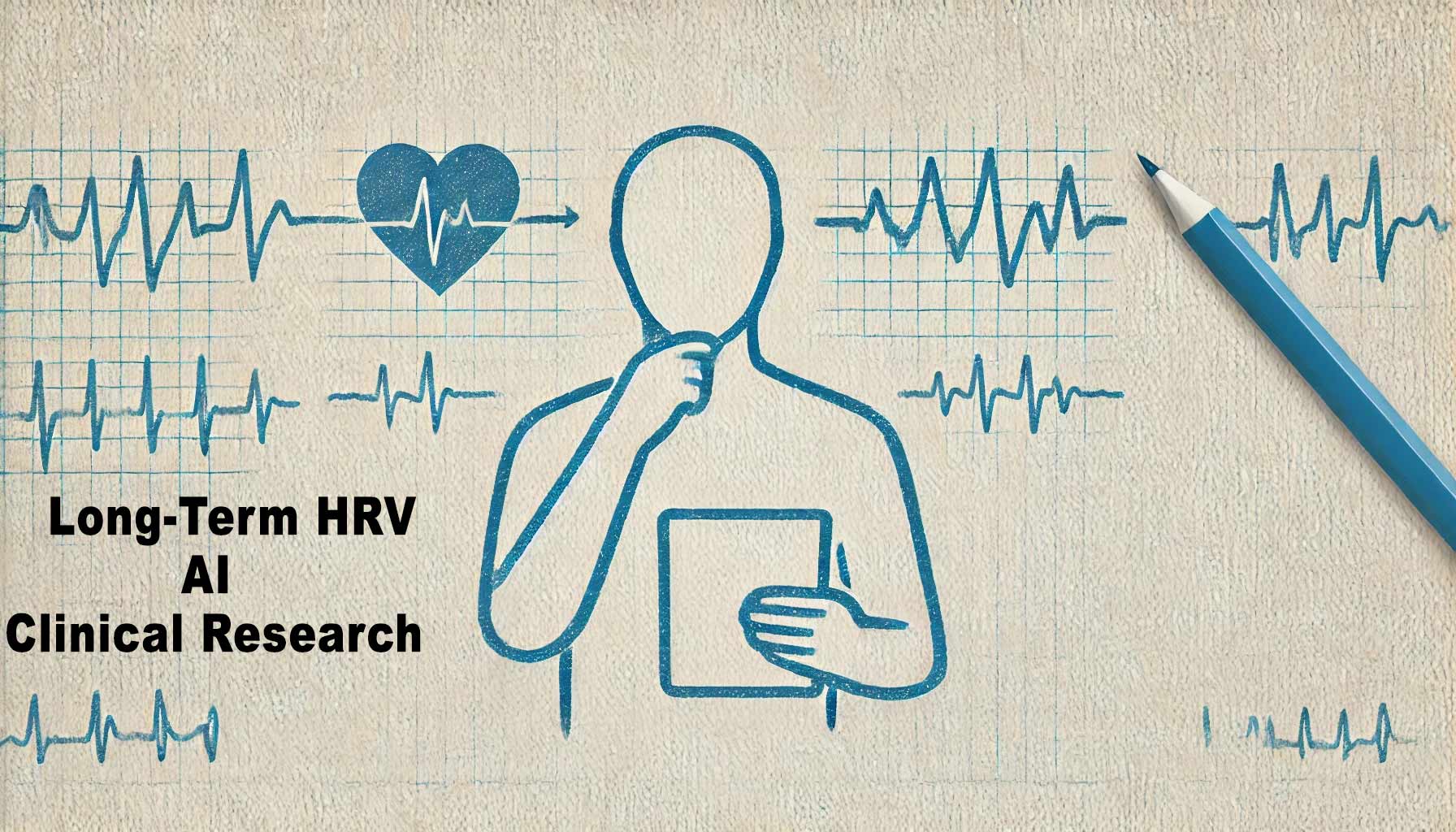I. Introduction
Importance of Long-term HRV Monitoring in Clinical Research
Long-term Heart Rate Variability (HRV) monitoring is essential in clinical research, offering insights into autonomic function, cardiovascular health, and stress responses. Continuous tracking over time helps researchers understand health dynamics, predict risks, and tailor interventions. However, the large volume and complexity of this data pose challenges for traditional analysis methods.
The Role of Artificial Intelligence in HRV Analysis
Artificial Intelligence (AI) offers powerful solutions to these challenges, enhancing the ability to analyze large datasets, detect subtle patterns, and provide real-time, actionable insights. AI-driven HRV analysis can lead to earlier detection of health issues, more personalized treatment plans, and better overall patient outcomes. This article explores the key benefits of integrating AI into long-term HRV monitoring in clinical research, highlighting its applications in cardiovascular health, mental health, and chronic disease management.
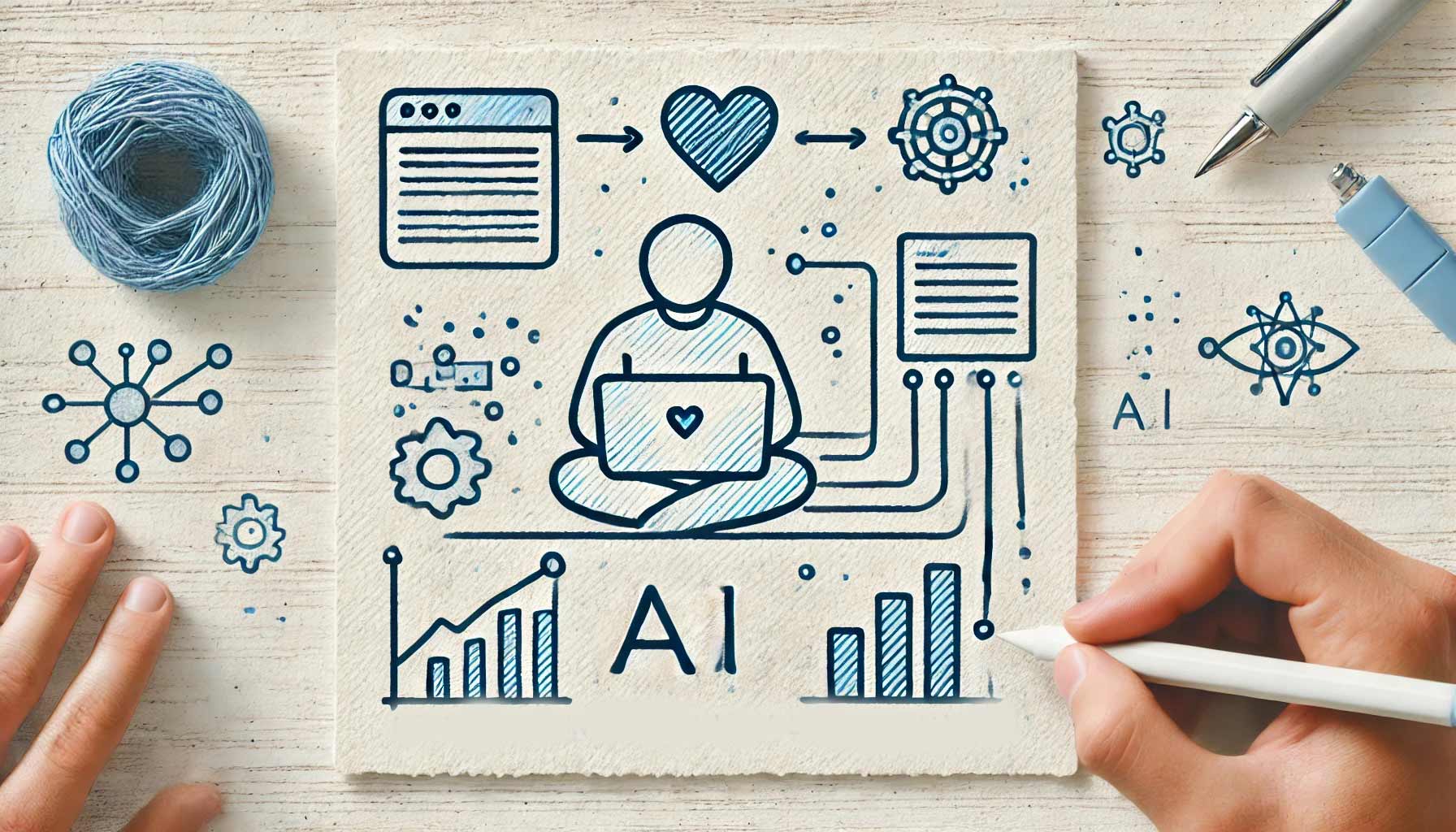
II. Benefits of Long-Term HRV Monitoring with AI
A. Enhanced Data Analysis and Pattern Recognition
AI excels at processing complex and high-dimensional data, making it particularly well-suited for long-term HRV analysis. Traditional methods often struggle with the variability and noise inherent in HRV data, but AI algorithms can automatically identify and learn from patterns that may not be apparent through conventional analysis.
- Deep Learning Models: Neural networks, such as Convolutional Neural Networks (CNNs) and Recurrent Neural Networks (RNNs), can recognize intricate patterns in HRV data, enabling more precise identification of physiological states or stress responses.
- Clustering and Classification Algorithms: Machine learning techniques like K-means clustering and Support Vector Machines (SVMs) can group similar HRV patterns or classify data into meaningful categories, such as normal vs. abnormal rhythms.
Key Advantage: AI-driven analysis can uncover hidden trends and correlations in HRV data, improving the understanding of autonomic responses to various health conditions.
B. Real-Time Monitoring and Early Detection
One of the significant advantages of AI in HRV monitoring is its ability to analyze data in real-time, providing immediate feedback and early warning signs of potential health issues.
- Predictive Modeling: AI can predict adverse events such as arrhythmias, heart attacks, or episodes of severe stress by continuously monitoring HRV and detecting deviations from normal patterns.
- Automated Alerts: AI systems can be programmed to issue alerts when certain thresholds are crossed, enabling timely interventions by healthcare providers or automatic adjustments in patient care plans.
Key Advantage: Real-time AI analysis allows for proactive health management, potentially reducing the risk of serious health events through early detection and intervention.
C. Personalization of Patient Care
AI-enhanced HRV monitoring supports personalized medicine by tailoring interventions based on individual HRV patterns and responses. This customization is particularly beneficial in managing chronic conditions and optimizing patient care.
- Tailored Interventions: By analyzing a patient’s unique HRV data, AI can recommend specific lifestyle changes, exercise regimens, or medication adjustments that are most likely to benefit the individual.
- Adaptive Health Plans: AI models can continuously update and refine patient care plans as new HRV data is collected, ensuring that the recommendations remain relevant and effective over time.
Key Advantage: Personalized care improves patient outcomes by aligning interventions more closely with the individual’s physiological needs and health status.
By leveraging AI for long-term HRV monitoring, clinical researchers can enhance their ability to analyze complex data, detect health issues earlier, and provide more personalized care. The next sections will delve deeper into specific AI applications in clinical HRV monitoring, including its use in cardiovascular health, mental health, and chronic disease management.
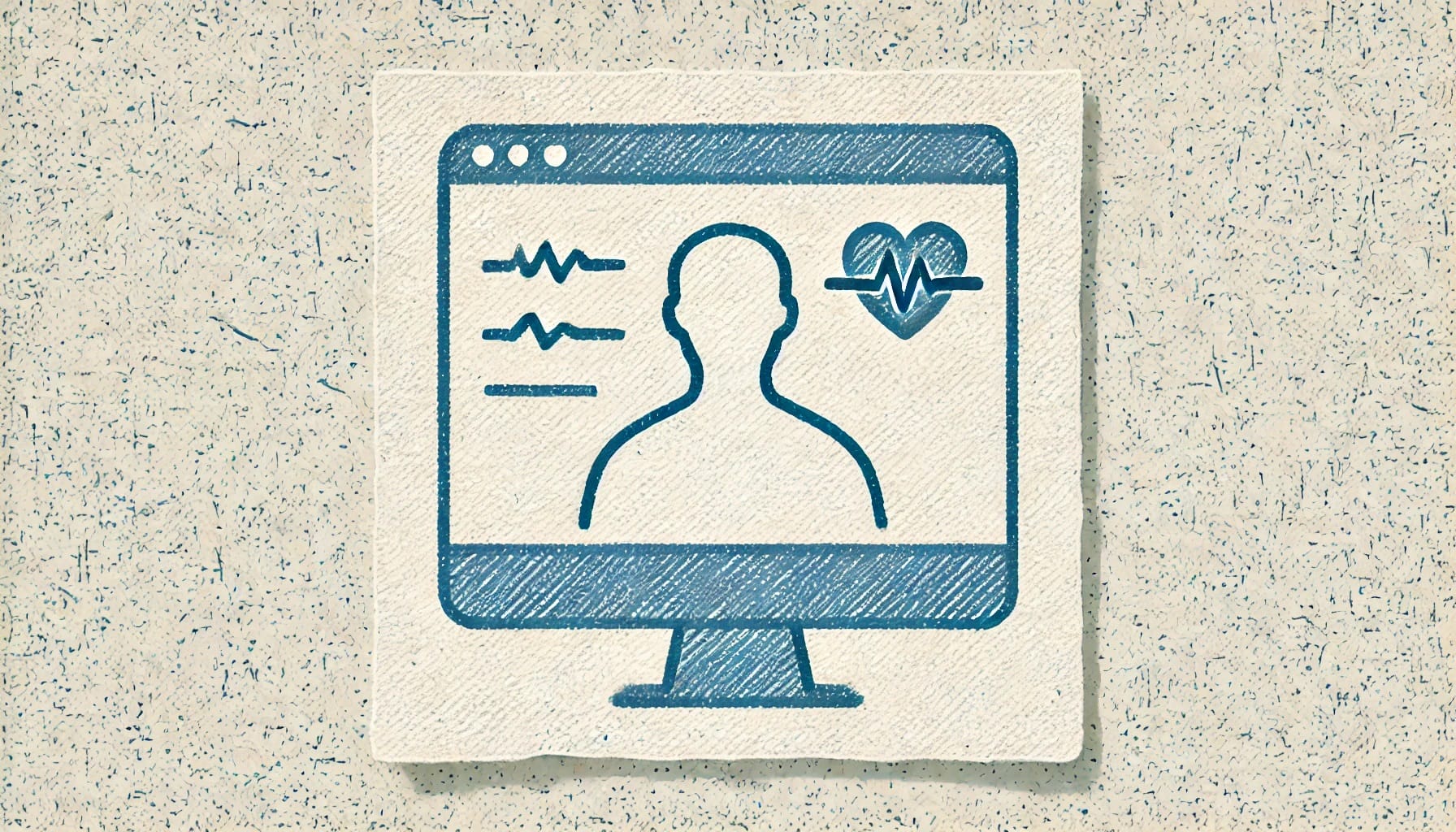
III. Key AI Applications in Clinical HRV Monitoring
A. AI in Cardiovascular Health Management
AI-driven HRV monitoring plays a crucial role in managing cardiovascular health by offering continuous, in-depth insights into heart function and autonomic regulation. Through advanced algorithms, AI can detect early signs of cardiovascular problems, guide treatment decisions, and monitor the effectiveness of interventions.
- Heart Attack Prediction: AI models can analyze long-term HRV data to predict the likelihood of a heart attack by identifying patterns associated with increased cardiovascular risk, such as reduced HRV or abnormal autonomic responses.
- Monitoring Heart Failure: For patients with heart failure, AI can track HRV changes that indicate worsening conditions, allowing for timely adjustments in treatment to prevent hospitalizations.
- Cardiac Rehabilitation: AI can support cardiac rehabilitation programs by providing personalized feedback on HRV changes during exercise, helping to optimize training intensity and recovery periods.
Example: A study using AI to monitor HRV in post-heart attack patients found that AI-driven models could predict adverse cardiac events more accurately than traditional risk scores, enabling more proactive management strategies.
B. AI in Mental Health and Stress Monitoring
HRV is a well-established marker of stress and mental health, and AI-enhanced monitoring allows for a more nuanced understanding of how psychological factors affect autonomic function. AI can help identify periods of high stress or anxiety, offering insights that inform mental health interventions.
- Stress Detection: AI algorithms can detect stress episodes by analyzing HRV patterns in conjunction with contextual data, such as time of day, physical activity levels, and environmental factors.
- Anxiety and Depression Monitoring: Changes in HRV have been linked to mental health conditions like anxiety and depression. AI models can track these changes over time, providing a non-invasive way to monitor mental health status and response to treatments.
- Biofeedback and Mindfulness Interventions: AI-driven HRV monitoring can be used in biofeedback and mindfulness training, providing real-time feedback on stress reduction techniques and their impact on HRV.
Example: Research has shown that AI models can differentiate between stress and relaxation states with high accuracy, supporting the development of personalized stress management programs that adjust in real-time based on HRV feedback.
C. AI in Chronic Disease Management
For chronic diseases, HRV serves as a biomarker that reflects the body’s ability to cope with ongoing stressors. AI-enhanced HRV monitoring can aid in the management of various chronic conditions by providing continuous insights into disease progression and treatment efficacy.
- Diabetes Management: AI can use HRV data to predict blood glucose fluctuations, helping to optimize insulin dosing and lifestyle adjustments for better glycemic control.
- Chronic Pain Management: HRV monitoring can provide feedback on the autonomic impact of chronic pain, allowing AI models to suggest interventions that alleviate pain and improve autonomic balance.
- Respiratory Diseases (e.g., COPD): AI can help manage chronic obstructive pulmonary disease by tracking HRV responses to respiratory therapies, guiding adjustments to improve patient outcomes.
Example: In a study on diabetes management, AI models that incorporated HRV data were able to predict hypoglycemic events with greater accuracy than traditional monitoring methods, supporting more effective management strategies.
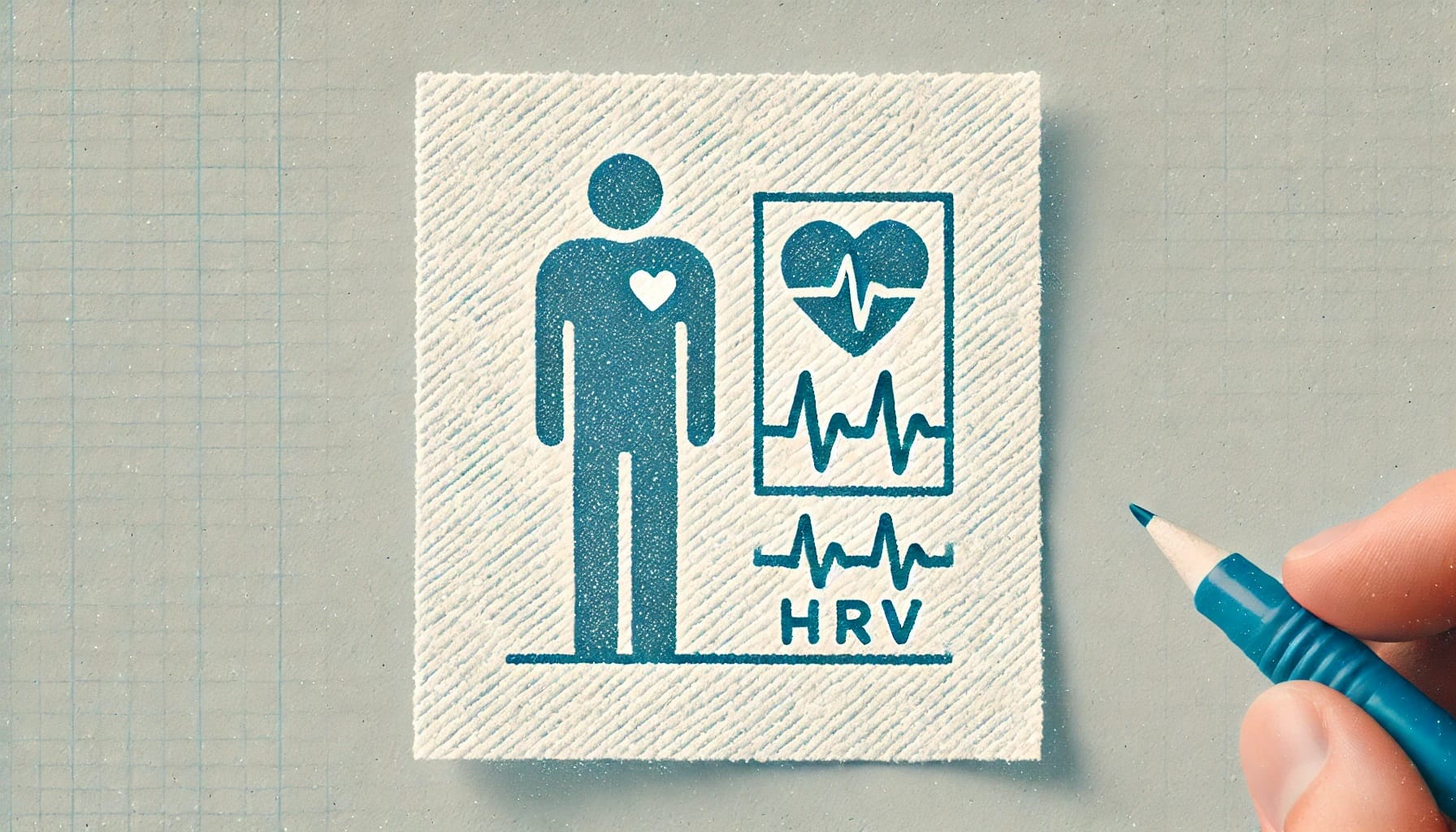
IV. Practical Considerations for Implementing AI in HRV Clinical Research
A. Data Quality and Integration Challenges
Implementing AI in HRV monitoring requires high-quality data and seamless integration from various sources. Ensuring that the data is clean, consistent, and accurately reflects patient conditions is essential for reliable AI analysis.
- Data Standardization: Use standardized protocols for HRV measurement across different devices and settings to reduce variability and improve data comparability.
- Handling Missing Data: AI techniques, such as imputation algorithms, can be used to fill in gaps in HRV data, ensuring that models are trained on complete datasets without sacrificing accuracy.
- Integration with Other Health Data: Combining HRV data with other physiological, behavioral, and environmental data can provide a more comprehensive view of patient health, but this requires robust data integration frameworks.
Best Practice: Implement automated data cleaning and preprocessing pipelines that can handle large, diverse datasets and integrate seamlessly with existing clinical workflows.
B. Ethical and Privacy Considerations
The use of AI in clinical HRV monitoring involves handling sensitive patient data, making privacy and ethical considerations paramount.
- Patient Consent and Transparency: Ensure that patients provide informed consent for AI-driven monitoring, understanding how their data will be used and the benefits it offers.
- Data Security: Implement strong security measures, such as encryption and secure access controls, to protect patient data from unauthorized access and breaches.
- Bias and Fairness: AI models should be validated across diverse populations to ensure that they perform equitably and do not inadvertently reinforce biases.
Best Practice: Regularly audit AI models for fairness and accuracy, and engage with patients and stakeholders to maintain transparency about the use of AI in their care.
C. Resource and Expertise Requirements
Successfully integrating AI into HRV monitoring requires resources and expertise, which can be a barrier for some clinical settings.
- Technical Infrastructure: Invest in the necessary computational resources, such as cloud-based platforms or in-house servers, to support AI model training and deployment.
- AI Expertise: Collaborate with data scientists and AI specialists to develop, validate, and maintain AI models. Training healthcare staff to understand and use AI outputs effectively is also crucial.
- Cost Considerations: Evaluate the cost-effectiveness of AI solutions, balancing the initial investment with the potential improvements in patient outcomes and operational efficiencies.
Best Practice: Start with pilot projects to assess feasibility and refine AI models before scaling up to broader clinical applications.
By considering these practical aspects, clinical researchers and healthcare providers can more effectively implement AI-driven HRV monitoring, overcoming common challenges and maximizing the benefits for patient care. As AI technologies continue to advance, their role in clinical HRV research is likely to expand, offering new opportunities for precision medicine and improved health outcomes.
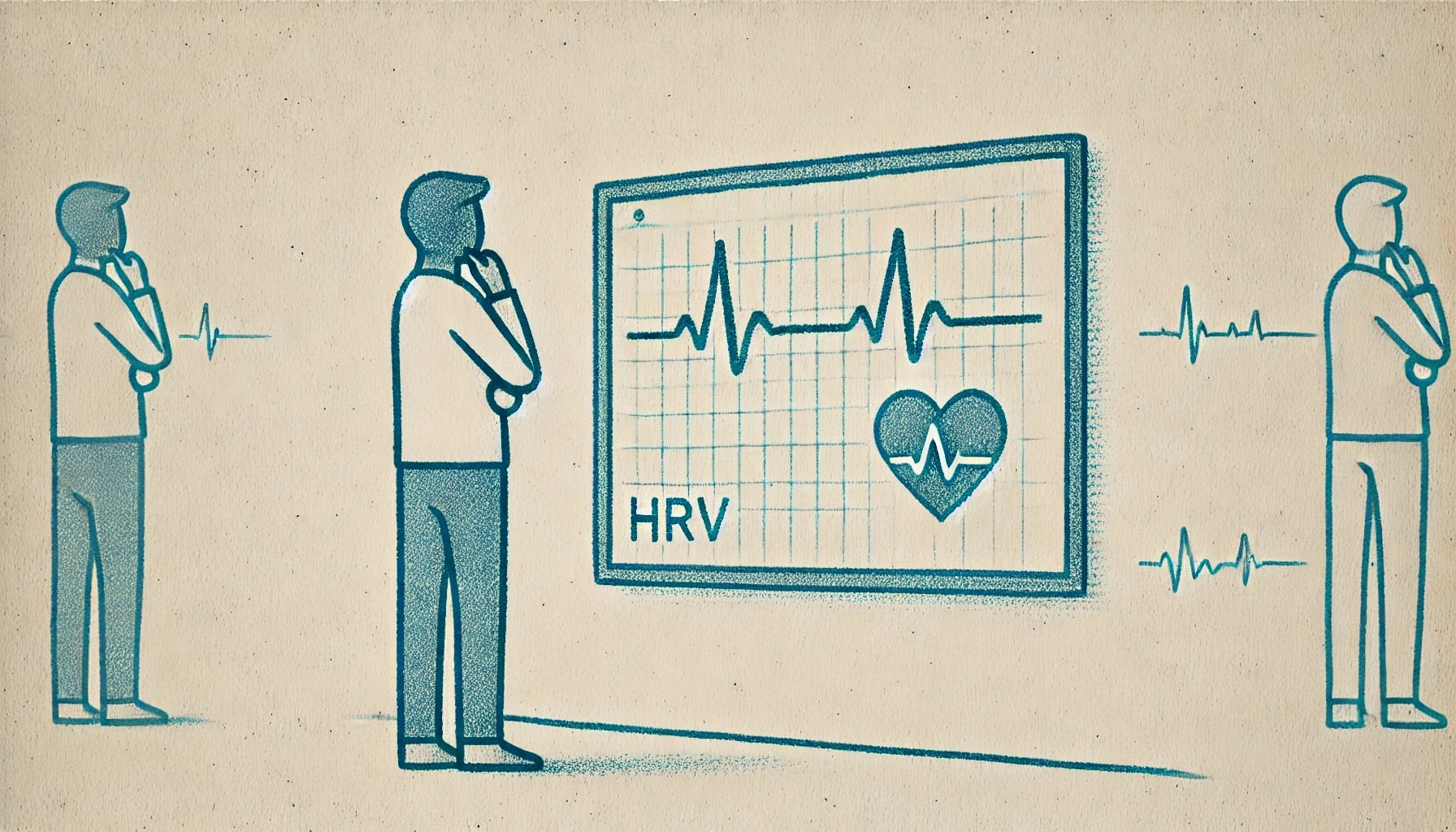
V. Future Directions and Emerging Trends
A. Integration of Multimodal Data for Comprehensive Health Insights
The future of HRV monitoring in clinical research is increasingly leaning towards the integration of multimodal data, combining HRV with other physiological, behavioral, and environmental factors to provide a more holistic view of patient health.
- Multimodal AI Models: Advanced AI algorithms are being developed to merge HRV data with other biometric data, such as EEG, ECG, and wearable device metrics (e.g., physical activity, sleep patterns). This fusion enables more comprehensive insights into the interconnected nature of various health parameters.
- Contextual Analysis: By integrating contextual data—such as weather conditions, time of day, or even social interactions—AI can adjust HRV interpretations to better reflect the real-world settings in which data is collected.
Emerging Trend: The use of digital twins, where a virtual model of a patient’s physiology is created using multimodal data, could revolutionize personalized healthcare by allowing for real-time simulations of treatment outcomes and adjustments.
B. Advances in AI Algorithms and Tools for HRV Analysis
AI technology is evolving rapidly, with new algorithms and tools continuously enhancing the ability to analyze HRV data. These advancements are paving the way for more sophisticated applications in clinical research.
- Reinforcement Learning: This approach allows AI to learn optimal interventions by continuously interacting with data in a trial-and-error manner. In HRV monitoring, reinforcement learning could be used to fine-tune treatment protocols dynamically based on patient responses.
- Explainable AI (XAI): As AI becomes more integrated into clinical decision-making, the need for explainability grows. XAI techniques aim to make AI models more transparent, allowing clinicians to understand and trust AI-generated insights.
- Federated Learning: This is a decentralized approach where AI models are trained across multiple devices or institutions without sharing raw data, thus enhancing privacy and security. Federated learning could allow broader participation in HRV research, with data remaining locally on devices or at healthcare facilities.
Emerging Trend: Combining reinforcement learning with federated learning could allow the development of adaptive, personalized models that continuously improve while maintaining patient privacy.
C. Expanding Access to AI-Enhanced HRV Monitoring
Making AI-driven HRV monitoring accessible to a wider range of healthcare settings, including primary care and telehealth, is a key focus for the future. This expansion could democratize access to advanced health monitoring tools, particularly in underserved areas.
- Consumer-Grade Devices: Integrating AI into consumer wearables, such as smartwatches and fitness trackers, can extend the reach of HRV monitoring beyond clinical settings. These devices, powered by AI, can offer preliminary health insights and alert users to seek medical attention when needed.
- Telehealth Integration: AI-enhanced HRV monitoring can be seamlessly integrated into telehealth platforms, allowing healthcare providers to remotely monitor patient health in real time. This integration supports continuous care, especially for patients with chronic conditions who require regular monitoring but may not have easy access to in-person visits.
- Scalable Solutions for Diverse Populations: AI models that are designed to work across different populations and healthcare environments can help address disparities in access to advanced health monitoring. This approach ensures that more patients can benefit from personalized insights and proactive health management.
Emerging Trend: AI-driven HRV monitoring tools that are easy to deploy and use, even with limited technical resources, will be critical in expanding access and bridging gaps in healthcare availability globally.
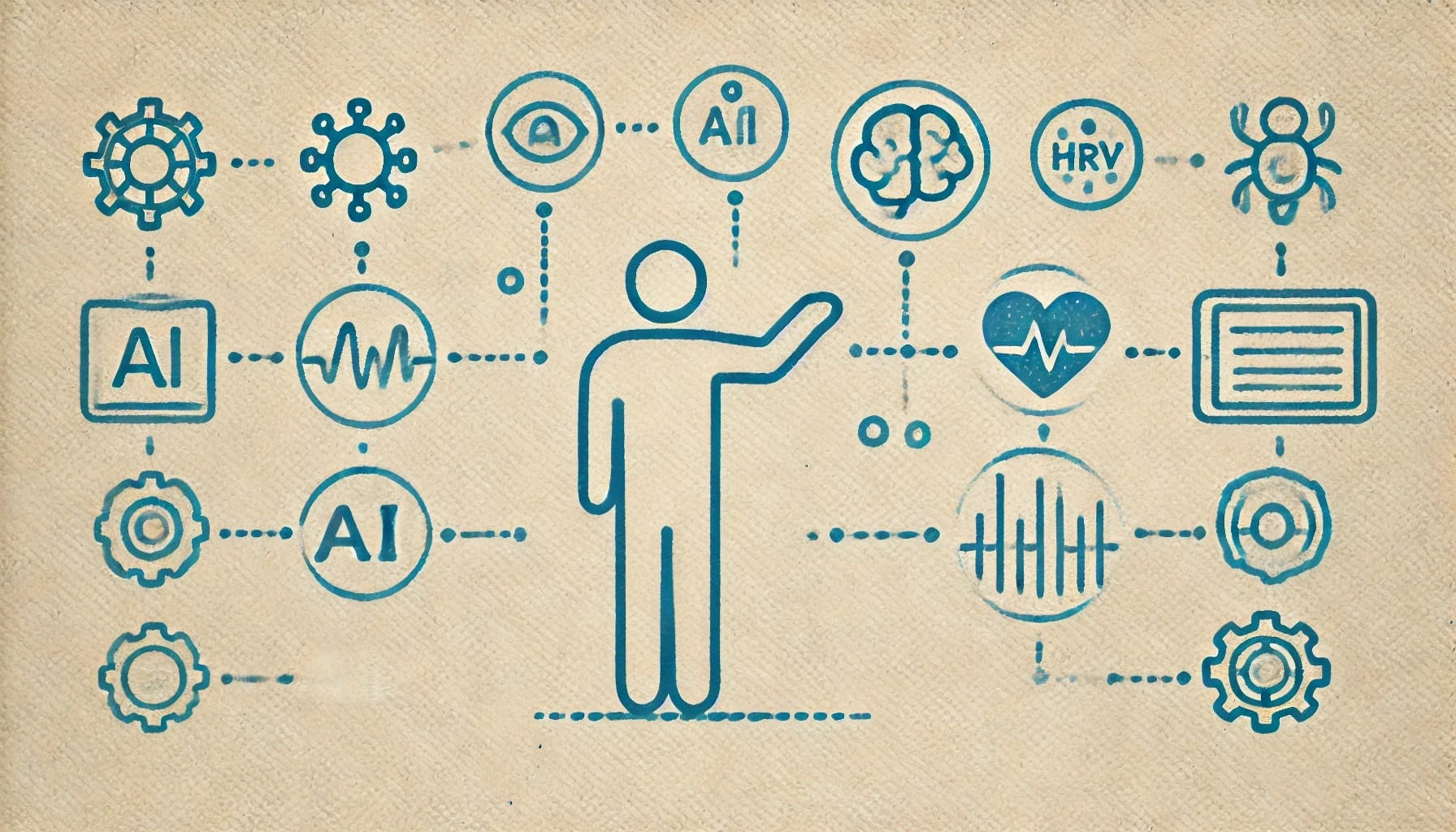
VI. Conclusion
Transforming Clinical Research and Patient Care with AI in HRV Monitoring
The integration of AI in long-term HRV monitoring is reshaping clinical research and patient care, offering powerful tools for enhanced data analysis, real-time monitoring, and personalized interventions. From managing cardiovascular health and mental wellness to supporting chronic disease management, AI applications are proving invaluable in unlocking the full potential of HRV data.
The Future of AI-Enhanced HRV Monitoring
As AI technology continues to advance, the scope of HRV monitoring will expand further, incorporating more sophisticated algorithms and multimodal data sources to provide even deeper insights into patient health. Embracing these technologies can lead to more proactive, personalized, and effective healthcare strategies, ultimately improving outcomes and quality of life for patients.
Embracing AI in HRV Monitoring: Shaping the Future of Healthcare
For clinical researchers and healthcare providers, the time to explore AI-driven HRV monitoring is now. By integrating these innovative tools into their workflows, they can enhance their research capabilities, optimize patient care, and contribute to the growing field of precision medicine. As the landscape of healthcare continues to evolve, AI in HRV monitoring will play a central role in shaping the future of clinical research and beyond.
Call to Action
📅 If you want to learn more about Fibion’s solution for measuring HRV, do not hesitate to book a video call with our expert Dr. Miriam Cabrita.

🔍 You may also discover our product portfolio on our website: Fibion SENS, Fibion Research, Fibion Vitals, Fibion Sleep, Fibion Emfit and Fibion Circadian, each with its unique set of features and applicability.
✨ For those interested in an in-depth look at the features and pricing across available heart rate variability (HRV) actigraphy tools, we invite you to explore our comprehensive comparison sheet. Click here for access.
Frequently asked questions about this topic:
How does AI improve the analysis of long-term HRV data? +
AI enhances long-term HRV data analysis by using deep learning models and machine learning algorithms to detect complex patterns, classify data, and provide insights that traditional methods may miss.
What are the benefits of real-time AI-driven HRV monitoring? +
Real-time AI-driven HRV monitoring allows for immediate detection of health anomalies, predictive modeling for adverse events, and automated alerts, enabling proactive management and timely interventions.
How does AI personalize patient care through HRV monitoring? +
AI uses HRV data to tailor interventions based on individual patterns, adapting health plans continuously as new data is collected, thus supporting personalized and effective patient care strategies.
What role does AI play in cardiovascular health management through HRV monitoring? +
AI assists in cardiovascular health management by analyzing HRV data to predict risks like heart attacks, monitor heart failure progression, and optimize cardiac rehabilitation, providing continuous and personalized insights.
Can AI help in monitoring mental health through HRV data? +
Yes, AI can analyze HRV patterns to detect stress, anxiety, and depression by identifying autonomic responses to psychological factors, thereby supporting mental health monitoring and personalized interventions.
What are the ethical considerations in using AI for HRV monitoring? +
Key ethical considerations include ensuring patient consent, maintaining data privacy and security, and addressing potential biases in AI models to ensure fair and accurate outcomes across diverse populations.










